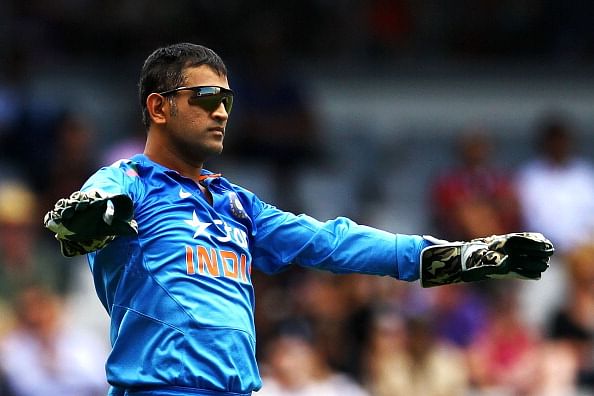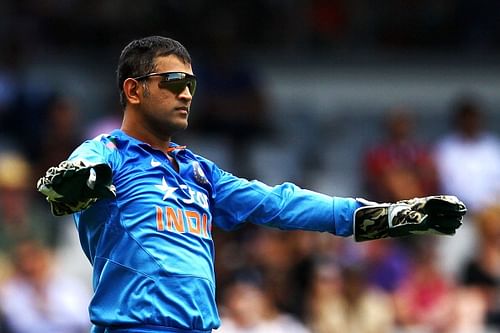
Satire: Review of MS Dhoni's autobiography - Well Of Course

The article is co-authored by Santosh Antony and Siddartha Khandelwal
After the autobiographies of Kevin Pietersen and Sachin Tendulkar created a huge stir, the world, including us, was waiting with bated breath for the slated release of MS Dhoni’s version.
Speculation was rife that the Indian cricket captain was unhappy with Tendulkar titling his autobiography as "Playing it my way", as, to Dhoni, it seemed more apt to his book. However, the current title, “Well, of course”, isn’t a bad one, either.
We, then, went to the nearest bookstore to enquire about our copy.
“I don’t have it,” was the store owner’s reply.
“What??!!” I asked, aghast.
“I have 2 copies of Playing it My Way and 1 copy of Timeless Steel still in my inventory. MSD’s company Rhiti Sports has refused to distribute their books where the books of any ‘senior player’ are available.”
Unable to believe this, we went to a couple of more bookstalls, only to get the same answer.
Finally, after tireless searching, a kind-hearted bookkeeper gave us a copy.
Relieved, Santosh asked, “How much?”
“Rs. 4500”
“What? For one book?”
It never comes alone
“One book? Dear Lord, no. Don’t you read the papers? MS Dhoni’s book is not to be sold loose. If you want to buy the book, you have to buy the whole set, which includes “I am now a hooker” by Suresh Raina (before imaginations run wild, we have not yet read it, but believe it has something do with his improved handling of short-pitched stuff), “Test Cricket is Best Cricket” by Murali Vijay, “Mai bhi mystery spinner” by Ravichandran Ashwin, “The Knight in the Shining Moustache” by Sir Sri Sri Ravindra Jadeja (there were unconfirmed rumours that it was ghostwritten by Shikhar Dhawan, and ‘Sir’ is returning the favor in the opener’s autobiography ‘Art of Leaving’.
The logic behind this unusual pact beats us, because both are equally adept at writing and, of course, “Satta, Satta and BCCI” by N Srinivasan (translates to Power Politics, Betting and BCCI). And the remaining 100 rupees will be donated to the ‘Srinivasan Charitable Trust’. Don’t worry, it is for a good cause.”
The shopkeeper even gave us a publisher gossip that Dhoni tried his best to include Mohit Sharma’s autobiography – ‘Ek Ehsaan hum na bhoolenge’, which translates to ‘I will not forget this favour by you’, but it was rejected, as publishers felt that the title (which Mohit refused to change even after much persuasion) could apply to most of the aforementioned autobiographies in the set and also create unwanted controversy.
What could we do? We simply had to read the book. So, after shelling out the cash, we went home and finally opened the first page of the book to be met with the following disclaimer:
“I do not drink and have no kinds of hangovers. Everything written in this book is true and to the best of my knowledge.”
P.S. I drink loads of milk, of course but more on that later.
The slow start
After turning the page, we were surprised to see the first page completely blank. At first, we thought that there was a mistake in print, but the realization soon dawned that the book was an exact replica of a typical Dhoni innings. After turning twenty or so pages, finally the words began to appear. The excitement in the initial pages was directly proportional to the expressiveness on Duncan Fletcher’s face during any given match. Any reader can be forgiven for going back to the blank pages and reading them instead, for all the “middle pages” described were mundane.
Dhoni begins with the basics of ticket collection and strategies to identify and nab passengers travelling without them. He, then, gets into a long emotional discourse on when his ticket checking pitch Kharagpur used to have the longest platform in the world and spends ten pages ranting about the remodelled Gorakhpur and Kollam platforms, which have relegated his ‘home’ platform to third. He then speaks about how he used to sit at various railway stations and watch trains go by, counting the number of bogies and the model and make of the engine. He talks about his life as a ticket collector and train fares.
Sets himself for the slog
However, we will save you the torture and fast forward the review to when about 80% of the book is complete, where it stops meandering and finally gets down to business.
Dhoni neatly connects past and present by stating that not much has changed from being a ticket collector to a cricketer.
“First I used to check tickets, now I collect Big-ticket cheques. It’s very much the same, nothing has changed,” he says, in the most matter-of-fact way possible.
One of the most startling revelations is at the beginning of his captaincy stint. Dhoni reveals that – though he never drinks – at times he occasionally ‘gets trippy’ and that, similar to Tony Adams, he entered the T20 World Cup finals ‘on a high’, before adding it was the reason why he threw the ball to Joginder Sharma in the last over, mistaking him to be Chetan Sharma and Misbah-ul-Haq as Javed Miandad.
The skipper confesses that what was hailed as a masterstroke was merely a sub-conscious effort to correct the last-ball six in Sharjah, of which he has been having nightmares since childhood. The sudden visual of Shanthakumaran Sreesanth charging towards him after holding that catch jolted Dhoni out of the trance; when he saw what happened, he chose to keep mum then, but not anymore, obviously, for that is what they do.
The revelations keep pouring down after this. Dhoni admitted that being the vice president of India Cements was necessary for him to “cement” his place in the side. He adds that he kept insisting young keepers to choose their requisite skills wisely as long as he is around. “All for a good cause”, he claims in his book.